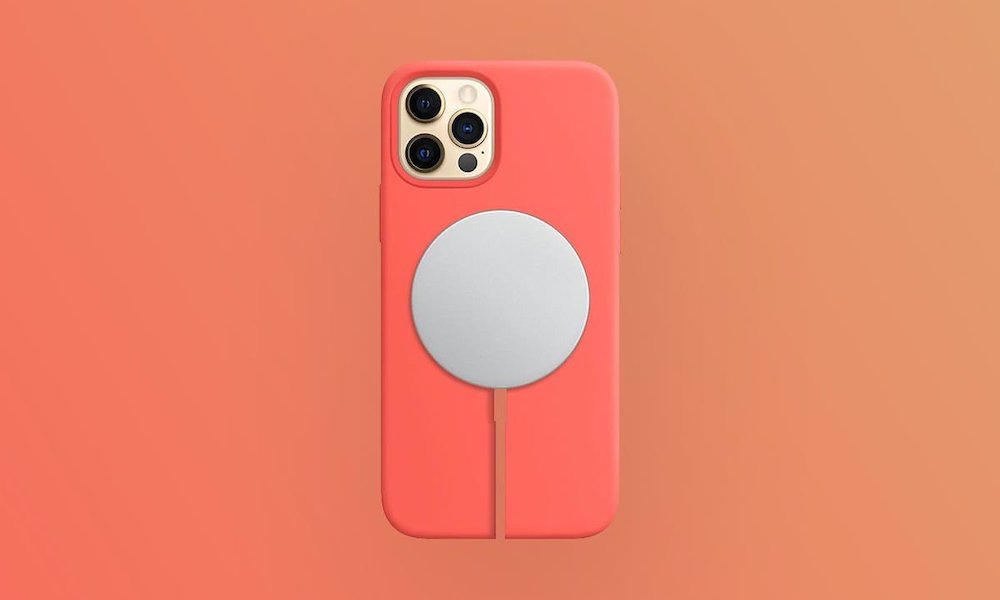Apple’s New MagSafe Chargers May Be Slower Than We Hoped
 Credit: Apple
Credit: Apple
Toggle Dark Mode
Apple’s new MagSafe accessory ecosystem was one of the few real surprises during last week’s big iPhone 12 launch event, and while Apple has unveiled its own MagSafe chargers that promise simpler and more efficient wireless charging, the latest tests reveal that the idea may be more appealing than the reality.
In her iPhone 12 video review, the Wall Street Journal’s Joanna Stern discovered that Apple’s MagSafe charger was significantly slower — up to two times slower, in fact — than using Apple’s new wired 20W USB-C charger.
Specifically, while the 15W MagSafe charger did perform better than the traditional 7.5W chargers, it was much slower than the wattage specs would suggest.
For example, an Anker wireless charger could juice up an iPhone 12 to 50 percent in about 1.5 hours, while Apple’s MagSafe Wireless Charger cut that time down to one hour. However, a wired connection with Apple’s 20-watt USB-C charger got there in a mere 28 minutes.
Why So Slow?
The USB-C charging speeds are consistent with the USB-PD Fast Charging spec that’s been supported on Apple’s iPhones since the iPhone 8 and iPhone X models added back in 2017, however the performance of the 15W MagSafe charger, which you might think should be able to charge at about 75 percent of the rate of the wired 20W connection, isn’t actually all that surprising.
The reality is that there’s a lot more to this than just the raw numbers, since wireless charging is really inefficient compared to wired charging.
Put simply, since the Qi charging is done via magnetic induction, not all of the energy put out by a wireless charger is translated into battery power. Much of it is lost as heat, and while this power loss diminishes with better alignment — which is undoubtedly a big part of what MagSafe is all about — it’s still not nearly as efficient as running charging power along a copper wire directly into the battery circuitry.
In other words, as magical as its technology sometimes seems, even Apple can’t break the laws of physics and thermodynamics.
So this isn’t really an issue with MagSafe, per se, so much as it’s a reminder that you’ll pretty much always be better plugging your iPhone in to juice it up if you’re in a hurry, plus it’s better for the environment too.
Even Slower on the iPhone 11
You may not realize it, but Apple’s MagSafe charger is basically just a standard Qi charger with a magnetic ring, and it can therefore be used to charge any other Qi–compatible devices, including Apple’s older iPhone models. In fact, Apple confirms this in the product overview.
Unfortunately, it would appear that right now Apple’s MagSafe charger offers glacially slow charging speeds on at least some older iPhone models. According to tests conducted by YouTuber Max Yuryev, shared by 9to5Mac, charging an iPhone 11 with Apple’s MagSafe charger yielded charging rates of just under 1W.
A new iPhone SE fared slightly better, drawing 1.83W, but this was still far slower than the 8.4W he got on a budget charger.
Yuryev noted that he used Apple’s 20W adapter for all of the tests, and was very careful to ensure that the charger was properly aligned in all cases, although as 9to5Mac points out, he was relying on an app to measure the charging current rather than measuring the actual charging time, although the fact that the app showed higher rates with other adapters still reveals a discrepancy.
It’s also possible that the smaller size of the MagSafe charger could make placement much more critical than with other chargers, and it would be hard to gauge accurate placement without the corresponding magnetic ring found on the iPhone 12. However, this would be the same problem that many users would run into when using the MagSafe charger with older iPhones or other devices.
Of course, it’s worth keeping in mind that the MagSafe charger actually offers no particular benefits for users of older iPhones as compared to just about any other Qi charger out there — every other iPhone model is only rated for 7.5W charging, so it can’t take advantage of the higher MagSafe charging rate, which is limited to working over active MagSafe connections anyway.
So there’s really no compelling reason to buy a MagSafe adapter for your iPhone 11 or iPhone SE, but of course these results could be disappointing for users whose household may include multiple generations of iPhones in use, since it could limit the ability of a MagSafe adapter purchased for an iPhone 12 to work with other family members’ older iPhones.






